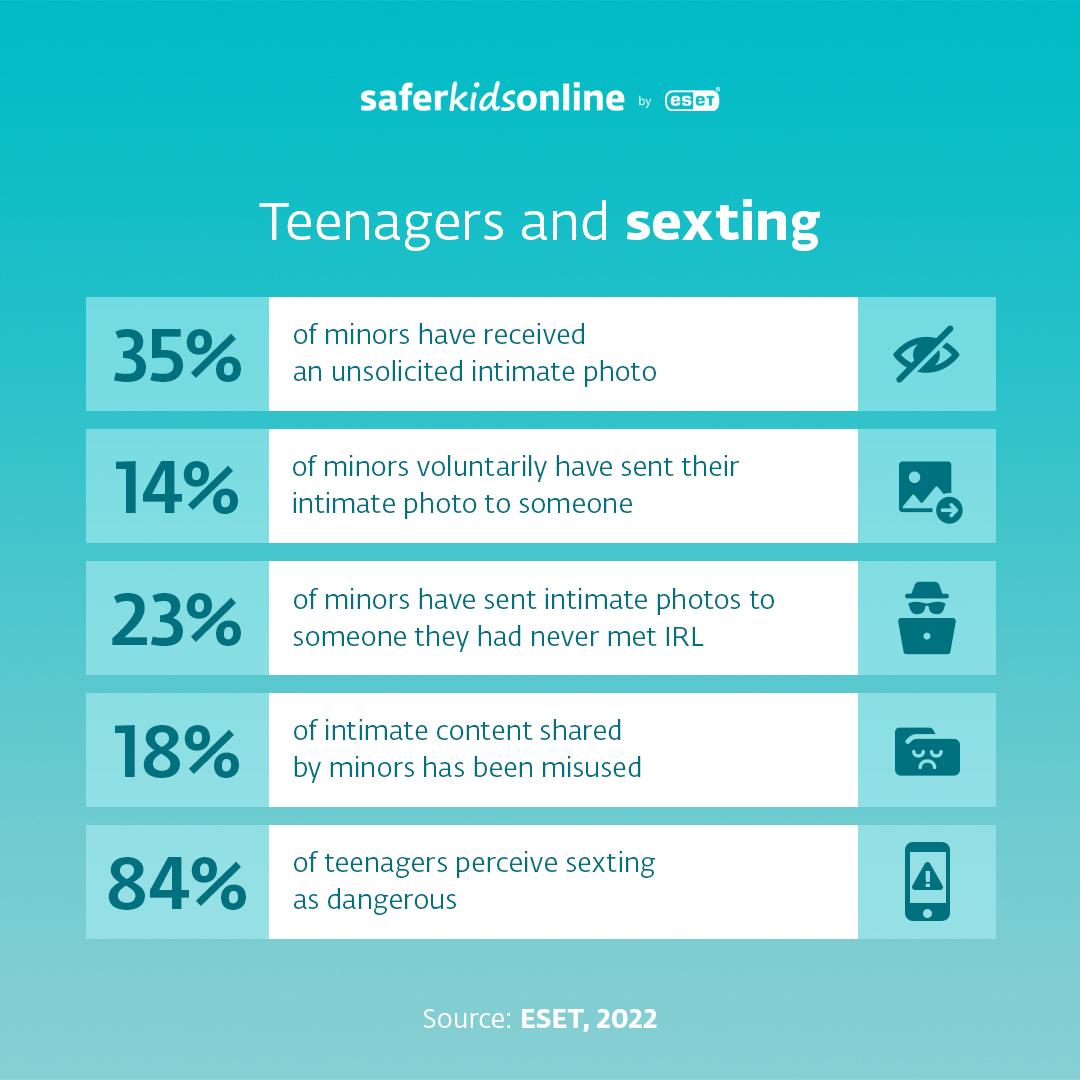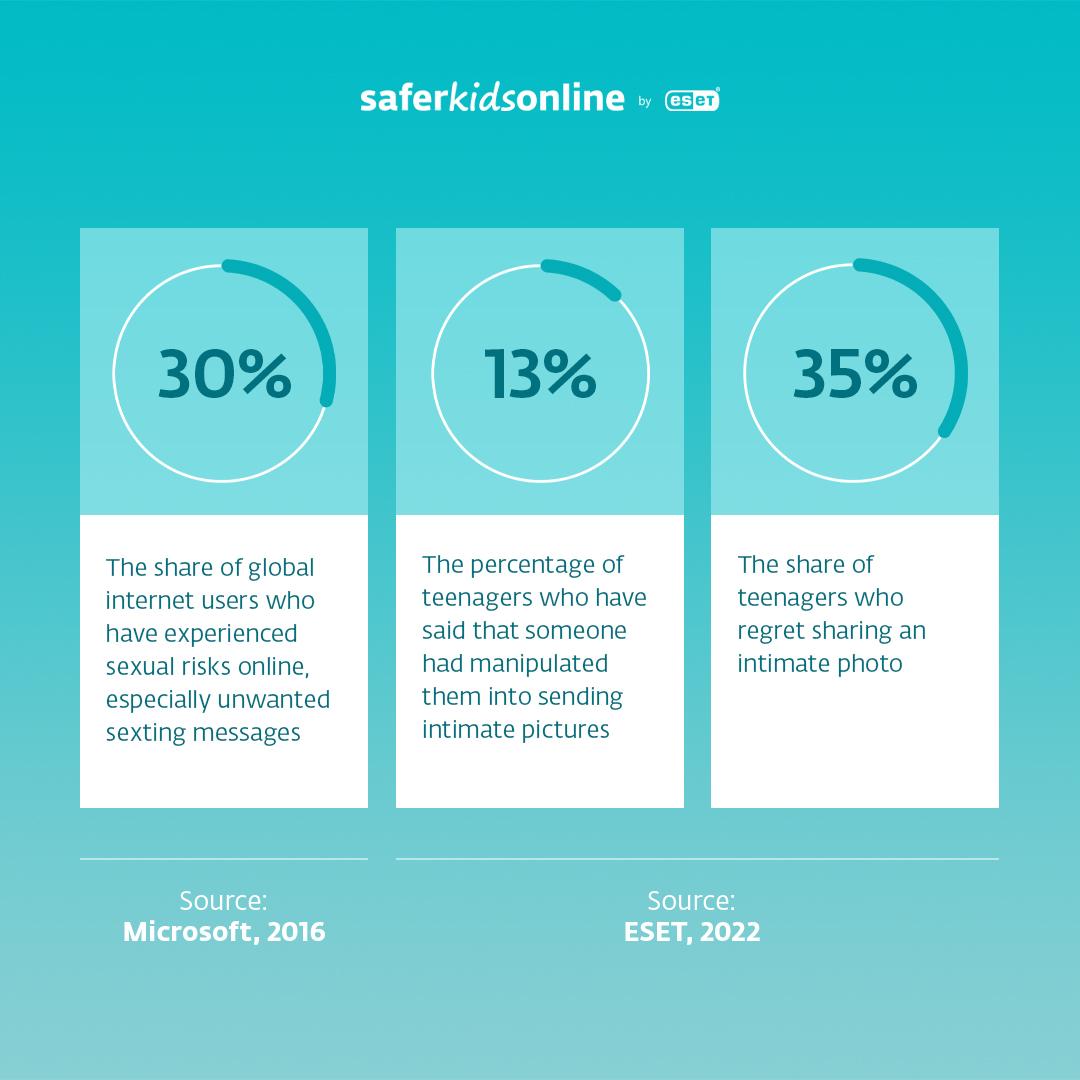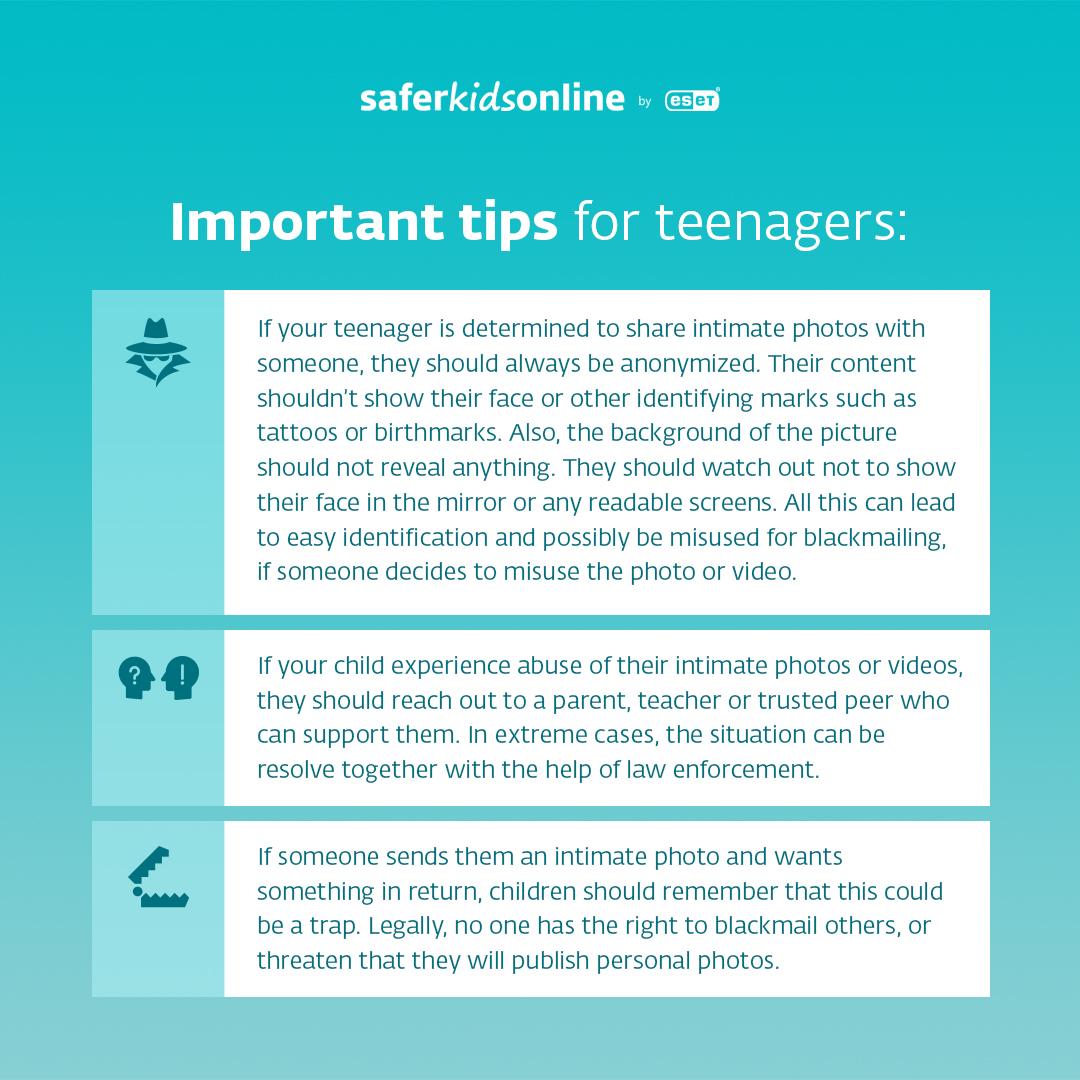But before we start – what is sexting? At its core, sexting is about sharing sexually explicit messages, photos, or videos online, more specifically and most commonly, through messaging apps. For teens, the reasons behind such actions can be as varied as a playful dare, a way to explore their identity or part of a budding relationship. “They may also be motivated by the urge to impress their peers and others around them. They need to feel accepted and be considered cool,” says child psychologist Jarmila Tomková. While sexting may seem harmless at first, it comes with serious risks – especially when it comes to privacy and the potential misuse of content.
The good news? With open communication, clear boundaries, and a little guidance, you can empower your teen to make safer choices online. To do that, you need to stay informed. Here’s a list of facts about sexting that you should know.
1. Sexting is more common than you think
According to a 2022 survey by ESET in collaboration with the Czech Police, one in seven minors and one in three adults have shared intimate photos or videos. While sexting is more common among adults aged 25-34, many teenagers also engage in this activity, often to impress peers or feel accepted.
2. Teens are often the victims of misuse
Approximately 20% of teens who have sent intimate content report having it misused. “Although we can see from the survey that consensual sexting is more likely to be experienced by adults than by adolescents under the age of 18, it is primarily teenagers who are victims of some form of abuse,” says a cybersecurity specialist at ESET. A 2024 survey conducted in the US has shown that in the group of people that only sexted occasionally when they were teenagers, the rate of abuse was still high (35%). Most cases arise after a breakup, with content being used for blackmail or bullying. Social media platforms like Instagram, Snapchat, Messenger, and Facebook are the most common channels for such incidents.

3. Content shared online never disappears completely
Even when deleted, shared content can resurface. Discuss with your kids that anything sent digitally can potentially be retrieved, reshared, or misused. Teach your children to think twice before sharing personal content and explain the importance of never sharing intimate photos with strangers.
4. Non-consensual sexting is a crime in some countries
Sexting without mutual consent is considered sexual harassment and can carry legal consequences in some countries. Similarly, in many locations, sharing explicit content involving minors is illegal and can lead to serious penalties for both the sender and those forwarding the material.
Why we need to discuss the law?
When it comes to the law, many people are led by misconceptions of what is and isn’t legal. For example, a 2024 survey by ESET UK has shown that almost a fifth (19%) of respondents surveyed were underage when they received their first sexual image, and 20% also mistakenly believed it was legal to send nudes under the age of 18. Additionally, almost half (44%) of respondents surveyed were unaware that it was illegal to incite or encourage someone to send sexual images if they themselves were under 18. This shows the growing need for discussion and education regarding the legal aspect of sexting.

5. Teens often know more about privacy features than adults
Teenagers are surprisingly skilled at using social media privacy tools, like blocking unknown senders or managing their settings. Don’t stay behind! Take the time to familiarize yourself with privacy features and explore them together with your kids. By staying involved, you can help bridge the gaps and empower your teen to stay safe.
6. Education and communication are key
Creating an open dialogue with your teen fosters trust and awareness. Calm and rational conversations about sexting are more effective than imposing extremely strict rules. Use real-world examples to explain the risks without resorting to fear tactics – and don’t judge. “If children come to you for advice, reassure them that confessing was the best move possible. Do not judge them. On the contrary, provide them with psychological support and acceptance so that they can regain confidence and a good feeling about themselves,” advises Jarmila Tomková.

7. There are tools to help keep kids safe
Secure messaging apps like Signal or Wickr offer features such as disappearing messages and screenshot notifications, which add a layer of protection. However, these apps are not foolproof, and technology alone isn’t the answer. Encourage your child to use these apps responsibly and help them understand their limitations.
Setting boundaries, not barriers
Instead of isolating your child from technology, focus on teaching them how to use it responsibly. Clear boundaries and open conversations can go a long way in strengthening their safety. Tools like ESET HOME offer comprehensive protection, including parental control features, to help you guide your child in making smarter choices online. It’s not just about setting limits—it’s about empowering your family with tools to navigate the digital world confidently and safely.
EXPLORE ESET HOME
Sexting doesn’t have to be a taboo subject. With the right tools, open communication, and clear boundaries, parents can guide their teens toward safer digital habits while fostering trust and confidence.





